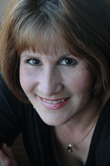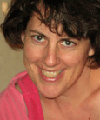It’s conference weekend! You’ve mapped out your classes, signed up for your pitches, sent in materials for critique, prepared your dossier, and painted your nails. Whew! Now what?
Workshop Strategies
After every workshop, thank the presenter and request his contact info so you can follow up if you have post-conference questions. If you don’t receive a card, write down the information on handouts. ALWAYS take the handouts, and at the end of each day (or each break, if you can swing it), reread the handouts, adding notes that you want to remember while they’re fresh in your mind. If you go with a friend, divide and conquer by attending different workshops and requesting two sets of handouts. Sometimes you can glean the same info by reading the handouts as if you had actually attended the class.
Critique Etiquette
Try not to get defensive as your critique expert pulls apart your manuscript with a fine-tooth comb. This is what you paid for, and it’s the only way you’ll learn. Instead, take copious notes and ask for his contact info in case you need to ask follow up questions post-conference. Thank your expert.
Pitch to Your Heart’s Content
Pitch to your chosen agents and editors. Ask to leave your proposal package with them or offer to mail it first thing in the morning. Don’t forget to ask for a business card and say “thank-you.”
Mingle
Offer up your business card to everyone you meet and ask for theirs in return. Find the conference committee members and thank them for their hard work. Ask if you can volunteer your services for next year. Give them your business card, too!
Within 24 Hours Post-Conference
Three-hole punch your workshop handouts, and file them in a marked binder. Organize the business cards you received at the conference, and send follow up e-mails to every contact you made. If it was an instructor, send a short e-mail thanking him again for his class; if it was a conference committee member, send a follow up reminder that you’re available for future venues; and if it was a new friend, send an e-mail to follow up on whatever it was you two said you’d do after the conference and make it happen!
Prepare all proposal packages for mailing by making sure you have the agent/editor’s correct address. Make adjustments to cover letters to reflect any new information you gleaned during your pitch session (including updated addresses). Reference something you talked about to jog their memory. Under your return address, mark in big, bold letters: REQUESTED INFORMATION – [NAME OF] WRITERS CONFERENCE. This will keep you out of the slush pile.
After every e-mail has been sent and every proposal package mailed, sit back, relax, and congratulate yourself on making the most of your first writers conference. We’ll see you at the next one!
Mary Andonian is the agents and editors coordinator for the Willamette Writers Conference—one of the largest writers’ conferences in the United States. In past years, she was Co-chair and Program Coordinator. She just completed her second book, Bitsy’s Labyrinth. You can reach her at (maryandonianwwconferencATyahoo.com).



















